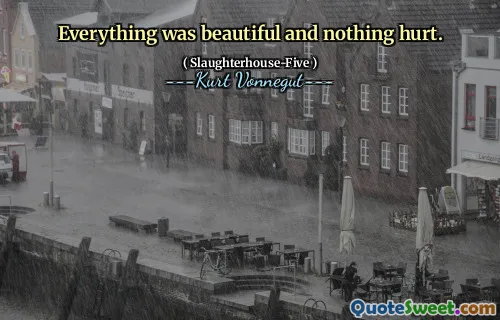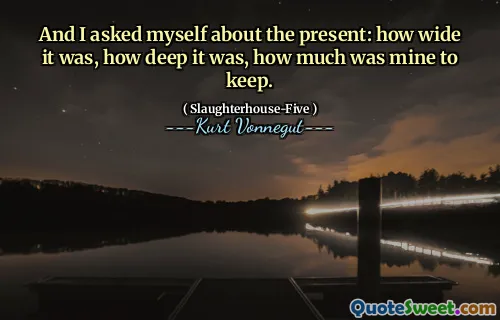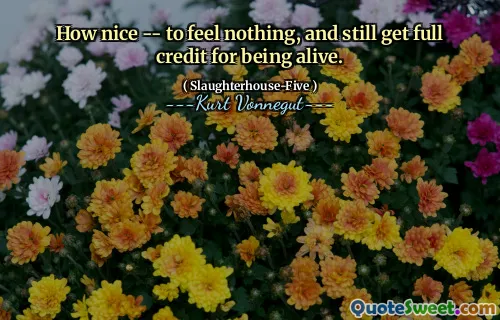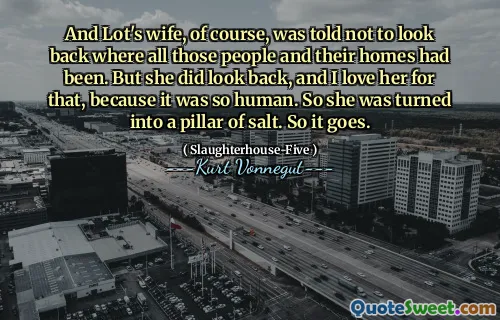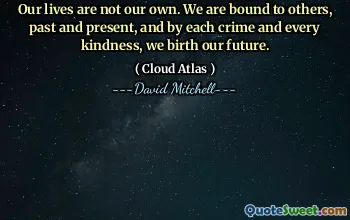
The second hand on my watch would twitch once, and a year would pass, and then it would twitch again.
In "Slaughterhouse-Five," Kurt Vonnegut Jr. captures the relativity of time through the protagonist’s experience. The protagonist, Billy Pilgrim, becomes "unstuck in time," experiencing moments from his life out of sequence. This unique perception illustrates how time can feel both linear and fluid, often influenced by human emotions and experiences. One poignant image describes the second hand of a watch twitching, signifying the abrupt passage of time, where a year can seem to vanish in an instant.
This metaphor encapsulates the essence of Vonnegut's exploration of trauma and memory. As Billy reflects on the horrors of war and the mundane aspects of life, the twitch of the second hand becomes a powerful reminder of how quickly time can elapse, yet how lingering memories can paint a different picture. Through this lens, Vonnegut invites readers to reconsider their own relationship with time, memory, and the lasting impact of their experiences.
